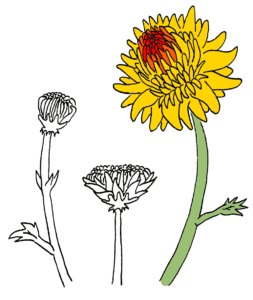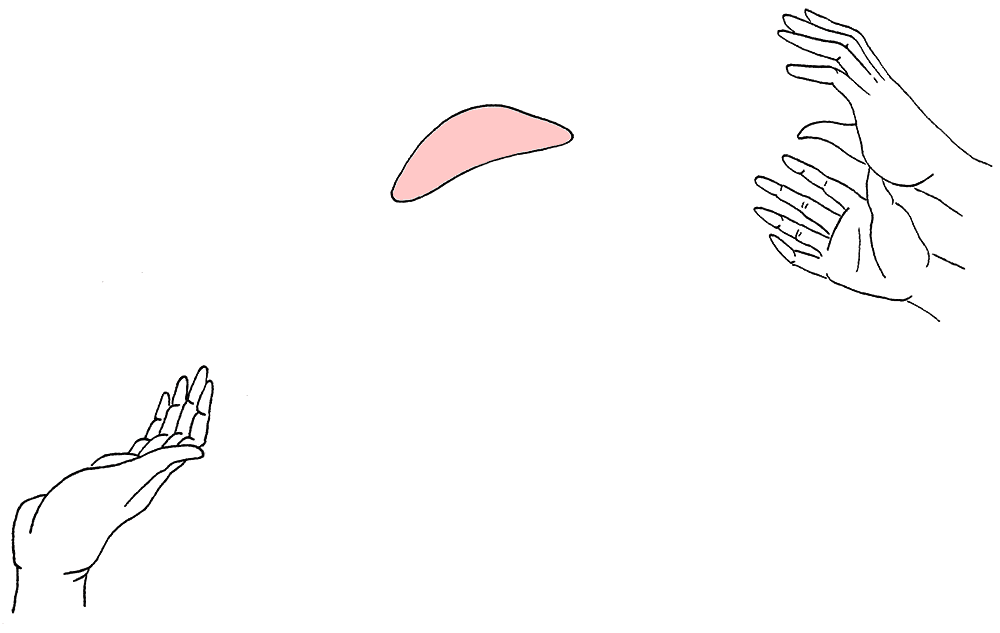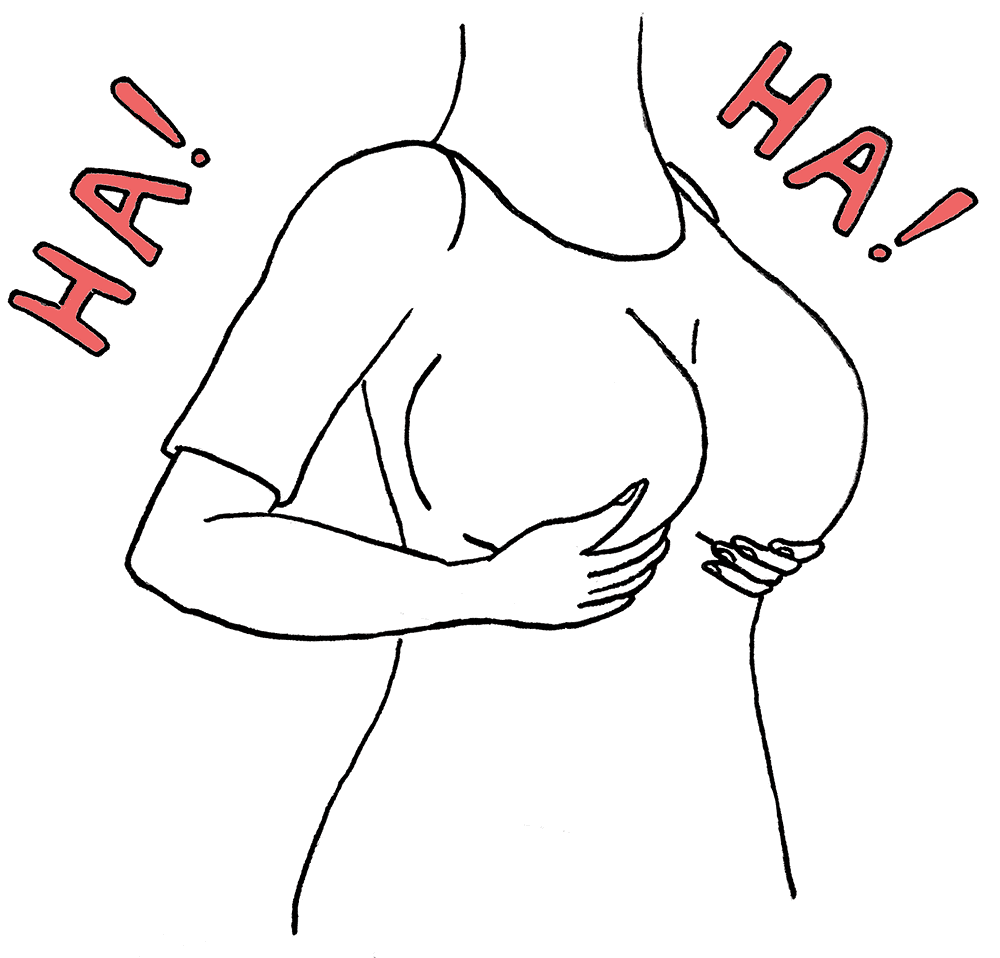
The first time I had my breasts removed was hard. The second time, less so.
Two nights before my first surgery—a bilateral mastectomy to remove an invasive breast cancer tumor—my husband and I checked into a hotel five miles from our house. We went for a run along the banks of the Charles River, a path we’d tread on our first date nine years and two children earlier. We showered. We dressed for dinner. I remember taking a long look at my naked self in the tripartite mirror above the bathroom vanity. I had turned forty two months earlier and was surprised by how strong I felt back then: focused, fit, feet set firmly in a life, a marriage, and a home I loved. If this was forty, I thought, bring it on.
But the woman in the hotel mirror reflected a different story. No matter how hard I stared at her, pivoting like a ballerina trapped in a music box, there wasn’t an angle that didn’t feature her breasts, or at least the suggestion of them. In two days those breasts would be gone. Who would I be then?
My mother died at sixty-two. Her mother at thirty-three. I hail from a long line of women whose bodies were made to bend to the will of their relentless drivers. Until they couldn’t. Angiosarcoma, leukemia, alcoholism, and pneumonia slowed my mother in what should have been her prime; the latter two sent my grandmother to the grave long before I was born. My mother lived half her life with just one breast, albeit a pendulous one: ample raw material to have fashioned a new cosmetic pair should she have wanted. But she cast off reconstruction as an unnecessary vanity, and from then until her death she did little to disguise her Picasso-esque, one-breasted body.
Back in 1983, after her own mastectomy, my mother’s surgeon had insisted that she take home a prosthesis to tuck into the empty cup of her bra as soon as her surgical site was healed. “It will make you feel whole again,” he said. She took the prosthesis all the way to Bermuda, where she and my father spent a week away from me and my younger brothers so she could recuperate. She transported the false breast to their island retreat and dutifully slotted it into place in her bathing suit, but when she dove into the ocean for the first time, her breast shot to her crotch. As she told it: she climbed out of the water, retrieved the giant silicone oval from her undercarriage, slung it onto the dock, and never wore it again. It came to rest in a dusty shoebox in the back of her closet among her least-loved shoes. Every so often my brothers and I would pull it out and toss it around like a misshapen, ponderous football. Sometimes Mom even joined the game.
I could summon neither my mother’s resolve nor her irreverence when it came to my own body. I thought it possible that breast reconstruction would be the silver lining to my cancer experience. “Survive breast cancer,” I told myself, “and you get a brand-new pair of boobs!” The idea brought to mind the physiques of two octogenarian women I’d encountered in Southern California a decade earlier. Everything about them—the ashy tint to their hair, the veins tangling their hands and feet, the way their skin was draped over their cheekbones, shoulders and knees—said they were old. Except for their breasts. Each of the women, seated side by side on the locker room bench, chatting amiably as they toweled off, sported a pair of perfectly round breasts that sat up on their chests like Mr. Potato Head’s boggled eyes. It was hard not to stare back.
Two years before my diagnosis—and a handful of months after my mother’s death—I’d spent an entire day on my knees in front of her hulking old mahogany secretary desk. I was searching for something, but I wasn’t sure what. The desk was a rabbit warren of compartments: drawers nested within drawers, each with their own tiny brass knob. Small keyed doors opened to Mondrian slots and shelves, some wide enough to hold just a single pen. Or an envelope. I burrowed into every space. I sorted through thousands of photo outtakes and half-filled notebooks from family vacations, examined and discarded obsolete school directories, books of expired ferry tickets, blank sticky notes, thumbtacks, chapsticks, and decades of dog hair and dust. I found nothing.
I briefly became convinced there was a secret compartment somewhere in the desk—a false back to a mail slot or a hidden drawer—where she’d squirreled away a letter to me. My mother had written to me so often; she couldn’t possibly have left this world without a final correspondence, could she?
At the time of the desk excavation we’d already sold my mother’s truck, motorcycle, and guns. We’d given away her clothes and cowboy boots, except for the turquoise pair she’d bought the week before she died. The day they arrived she asked the hospice nurse to help horn them onto her swollen feet and the nurse just looked at her and said, “The only thing you should be putting on your feet these days, honey, is a nice, cozy pair of slippers.” That was the same day my mother made me take her out to buy new luggage and two big pots of chrysanthemums. She’d be dead in forty-eight hours; where did she think she’d be traveling with that luggage? Then again, maybe an empty set of shiny new suitcases is kin to the unopened letter in the hope department. You could go anywhere. It might say anything. Just imagine. As for the mums, I can’t look at them now. All fall I avert my eyes from the roadside garden centers, haunted by those tight little buds of hope that have no home in my lexicon of optimism.
At the end of the day, I’d filled five trash bags with waste. I had a small pile, small enough to fit into a child’s knapsack, of what was worth keeping. At the top of the stack was a glossy page torn from Harper’s Bazaar, an editorial written by a man who made the psychological case for reconstructive surgery for women who had undergone a mastectomy. Paper-clipped to the column inches was a Xerox of a typewritten letter above my mother’s signature. In the letter she pushed back—hard—against the author’s assertion that women couldn’t feel confident, sexy, or whole without breasts. She wrote in plain language about her own mastectomy, her unconventional choice not to reconstruct, her healthy sex life with my father, her ability to work and play with her children, all despite the fact that she had just one breast.
I’d never seen the letter before. It wasn’t addressed to me and it wasn’t the letter I was looking for. But I kept it and filed it away with a handful of other papers in a box in the basement.
Later, after my own bilateral mastectomy, I dug it out and read and reread it. I could imagine my mother’s fingers moving across the keyboard of our electric typewriter and hear the sough of the paper when she whisked it from the roller. I could feel her conviction as she snapped shut the case and stowed the typewriter back beside her desk. And I could imagine her triumph as she folded the letter into a #10 envelope, licked the back, and affixed a stamp. This was a letter to me after all, one full of hard-won wisdom and clarity. I just hadn’t recognized it for what it was: a tight bud set to bloom in another season.
My mother must have known long before I figured it out that motherhood is, at its core, a series of unanswered letters. Some tucked into envelopes. Others tucked into our cells. Letters like BRCA and PALB, the looping helixes of DNA as legible to geneticists as the ball point script scrawled in decades-old birthday cards. These maternal letters point the way. They’re both epistolary signposts and chromosomal breadcrumbs. Here is the way, the letters say. Step lightly. Turn here. Now straight ahead. Full speed.
I wanted to take the way my mother suggested. I wanted to be the kind of woman who did not need reconstruction, who was capable of drawing a deep, self-assured breath and stepping into the world flat-chested. It was my birthright after all. My matrilineal inheritance. My mother had raised me to be that woman and I was raising my own daughter in the same wild-eyed, wild-haired, “resist tradition” tradition. I thought I had met that woman in the mirror on my fortieth birthday. But I was fast coming to discover that I was not her. Cancer had tilted my world and my confident sense of self had spilled over the edge before I thought to grab it.
Cancer happens fast. When you are diagnosed, you get a call from an oncologist. In my case, from a man who had, days earlier, palpated my breast tissue, pronounced it dense, and congratulated me on finding the lump myself before sending me off for a biopsy. You don’t know it yet, but this man, your surgical oncologist, has one job: remove the part of you that is diseased. It might be a lump. Or a breast. Or, in cases like mine where the cancer is linked to genetics, both breasts. Your surgical oncologist won’t even stay in the operating room until the end of your initial surgery. It is the plastic surgeon he recommends who will stitch you up and manage all of your post-operative care. Your medical oncologist, another person altogether, will helm your drug regimen: a bespoke combination of chemotherapy cocktails and longer-term pharmaceutical treatments. Though your surgical oncologist fires the starter’s pistol at the onset of your cancer journey, he never sees the finish line. It’s not his job to imagine it—or you—there. You’re a human baton who gets passed from specialist to siloed specialist, hopefully without getting dropped.
On the day of my diagnosis, when my surgical oncologist told me he had the news he expected—it’s cancer—all of the coiled tension I had been storing over a fortnight of appointments and examinations, mammograms and biopsies, became kinetic. I leapt into action, sprinting off the start line of my cancer event the way an eight-year-old might start her neighborhood 5k: unsustainably, unwisely fast.
I met with four medical professionals that first day: my surgical oncologist, his nurse practitioner, my plastic surgeon, and a genetics counselor. I race-walked from office to office, considering it a point of healthy pride to avoid the elevator banks and the throngs of inert people standing there. I moved swiftly from floor to floor—a rat in a maze—scurrying down long uncomplicated hallways, through sets of unmarked doors, up and down hollow cement block stairwells. I issued breathless greetings to people I encountered on my travels, mostly hospital staff, and pushed on to the next floor, heart racing, lungs bellowing, mind grinding.
On the second floor of Mass General’s Wang building I met with my surgical oncologist, a man who loosely resembled Santa Claus after a juice cleanse. For the second time that week, I laid back on his examination table while his ten fingers enacted an impression of a millipede traveling in dilating circles around my breasts. As he peeled off his latex gloves and I retied the strings of my hospital gown, my surgical oncologist told me in his avuncular tone that “most women my age opt for reconstruction.”
Two floors up and an hour later, I met my plastic surgeon. He offered chairs to me and my husband and planted himself on a metal swivel stool. Knees splayed wide, a cant to his torso, he managed to keep his shoulders squared to me while looking and speaking almost exclusively to my husband. As we talked, the plastic surgeon held a perfectly round breast implant, passing it from hand to hand like a middle reliever palming a baseball. I wouldn’t have been surprised at all if he’d spat a stream of tobacco on the linoleum floor. “We don’t need to hit a home run here,” he said to my husband. “Let’s just slap a double off the outfield wall and call it a day,” My husband, a baseball enthusiast, nodded his assent.
Moments later we were ushered down the hall to the exam room that was home to an impressive display of breast implant options ranging in size and feel from chicken cutlets to pneumatic jelly donuts. Back turned to my husband, I grabbed the largest set of implants off the table and tucked them under my shirt. When I pivoted to face him there was barely enough space for him to take in the tableau. We laughed for the first time that day and I felt the adrenaline ebb. I was tired. I’d been poked, prodded, photographed naked, passed from hand to hand. So I said yes. Yes to joining my cancerous age cohort. Yes to men talking about my body using baseball metaphors. Yes to a nice, modest set of jelly donuts bolted onto the front of my body.
Post-surgical breast reconstruction is a bit like going through puberty at hyper speed, albeit with the benefit of a forty-year-old’s perspective. Several months after my bilateral mastectomy I checked back into Mass General, gamely accepted an intravenous anesthetic, and awoke with two hard lumps where my breasts had been months earlier. These were my tissue expanders. They were held in place by a hammock of my pectoral muscle, which my plastic surgeon had divided in two and recast in a supportive role for what would be my new breasts. The tissue expanders were, at that stage, rugged empty balloons. Over the course of the next two months I would return to the hospital weekly and meet with a member of my surgeon’s staff, who would ask me to strip to my waist, instruct me to lie back in the chair, and then seek to aim a hypodermic syringe filled with twenty ccs of saline at the magnet marking the portal to my tissue expanders. Week by week, under the fluorescent glare, my breasts grew.
After eight weeks of fill-ups, my skin and the subcutaneous soft tissues of my chest had stretched to proportions approximating my original breasts. Though my plastic surgeon said I could “go bigger,” I decided these doppelgänger facsimiles of my original breasts were good enough for me and we scheduled a final surgery to swap out the expanders for my permanent silicone implants. This third surgery was by far the easiest and I sailed out of the hospital, nearly hopping double-footed into my jeans in the recovery room’s curtained changing area. I was buoyed both by the thrill of being able to cut a female figure in the world again, and by the knowledge that I was done—finally—with hospitals and surgeries.
Over the coming months, though, my implants and I didn’t become the fast friends I’d hoped we’d be. For starters, my children—then three and five—thought they were too hard. My daughter would crawl up into my lap and tuck her head under my chin only to stop, shift uncomfortably, and start poking at my chest. “These feel funny,” she’d say. And she was right: they were funny. Sometimes the implants migrated laterally so rather than looking like a woman with an enviable pair of gravity-defying breasts I looked like a woman with goiters in her armpits. Other times—particularly when I was in the water with my children—the implants would float together in the center of my chest, causing my kids to laugh and point at my “uniboob.”
I was also becoming aware of how they felt to other people: my husband, of course, but friends and family, too. When my body was close to another—whether romantically entangled or simply wrapped in a platonic hug—the implants tended to slide one way and the other. They were unsettled, ill at home in my body. And my body was less of a home with them under my skin. Without acknowledging it, I’d heeded the antiquated advice of my mother’s oncologist and her Harper’s Bazaar adversary lo those many years ago: I’d believed that adding missing pieces would make me whole. But I was coming to understand that my path to wholeness might mean taking pieces away. Less of me meant I’d have the chance to be more me.
So back I went, into the Mass General OR catacombs, to have my breasts removed a second time. My plastic surgeon staged a valiant last-minute stand on the threshold of operating room 35. A new type of silicone, he promised: much softer and much more real. “Let’s give them a try,” he urged. But I’d looked in the mirror early that morning and I’d caught a glimpse of my mother there and I knew, now, that I was ready to be the woman she’d raised me to be. “No,” I told my surgeon, “Just take them out. I’m better without them.”
A few convalescent weeks later my daughter and I stepped squeaky-clean out of the shower and as I wrapped her tight in a towel I saw her staring at my scarred and barren chest. Hoping to preempt any discord in her little head, I said: “Mama’s chest looks kinda gross, huh?” She paused. She looked hard. At me. All of me: my face, my chest. She took full measure. Then she dipped her chin and looked down the undisturbed plane of her own body. And she said, “No, Mama. No. You look just like me.”
***
Rumpus original art by Cowboy Rocky.







